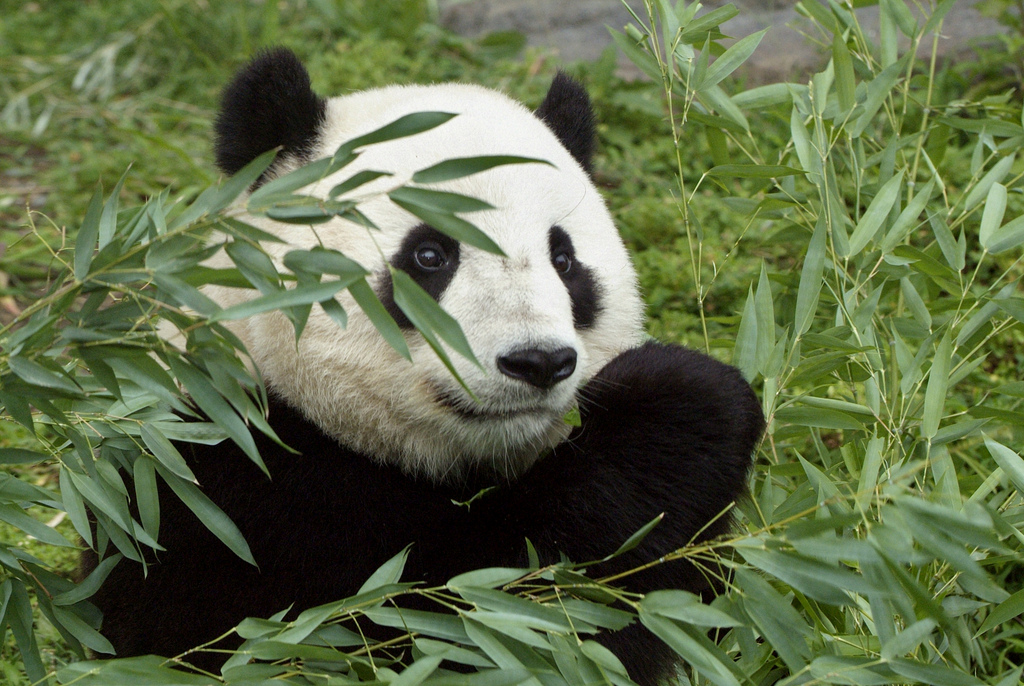Pandas' Bamboo Food May Be Lost to Climate Change

Though they are one of the most beloved animal species on Earth, pandas aren't safe from the devastating effects of climate change.
According to a new study, projected temperature increases in China over the next century will likely seriously hinder bamboo, almost the sole source of food for endangered pandas. Only if bamboo can move to new habitats at higher elevations will pandas stand a chance, the researchers said.
However, if conservation programs wait too long, human inhabitants and activities could claim all of the new habitats capable of supporting bamboo in a warming world.
"It is tough, but I think there's still hope, if we take action now," said research team member Jianguo Liu, a sustainability scientist at Michigan State University. "If we wait, then we could be too late."
The researchers used various climate-change models to project the future for three bamboo species relied on by pandas in the Qinling Mountain region of China, which represents about a quarter of the total remaining panda habitat. These models varied in their specific predictions, but each forecasted some level of temperature rise within the coming century.
The results suggest that if the bamboo is restricted to its current distribution area, between 80 and 100 percent of it will disappear by the end of the 21st century, because it won't be able to grow under the increased temperatures. [How Pandas Pick the Perfect Spot to Pee]
If, however, bamboo can move into new, cooler areas (which will reach the same temperatures as current bamboo habitats due to warming), then there is hope. However, that all still depends on the extent to which humans can curtail climate change by limiting greenhouse-gas emissions in the future.
Get the world’s most fascinating discoveries delivered straight to your inbox.
"All the models are quite consistent — the general trend is the same," Liu told LiveScience. "The difference is the degree of the changes. Even with very hopeful scenarios, where we allow bamboo to go anywhere it wants, there are still very severe consequences. Of course, if the bamboo has nowhere to go, then the panda habitat will be lost more quickly."
Many pandas in the wild currently live in nature reserves protected from human encroachment. However, almost all of the land encompassed by those reserves will be unsuitable for the bamboo if the temperatures rise as predicted.
But if conservationists plan ahead now to move those reserves in line with changing bamboo habitats, then it may be possible to preserve the land the pandas will need.
And climate change is not the only challenge facing giant pandas, one of the most endangered species in the world, researchers say. Human activities have already severely limited the animals' habitats, and their dependence on a single source of food, one that's not that nutrient- or energy-rich, doesn't help.
In addition to their native habitats in China, pandas live around the world in zoos and breeding centers. But Liu doesn't predict a bright future for the bears if they lose their wild habitats.
"To really protect pandas, you cannot just stick [them] into a breeding center or a zoo," he said, noting that the animals' genetic diversity would suffer, among other issues. "That's not a long-term solution."
The results of the study are published in the Nov. 11 issue of the journal Nature Climate Change.
Follow Clara Moskowitz on Twitter @ClaraMoskowitz or LiveScience @livescience. We're also on Facebook & Google+.



